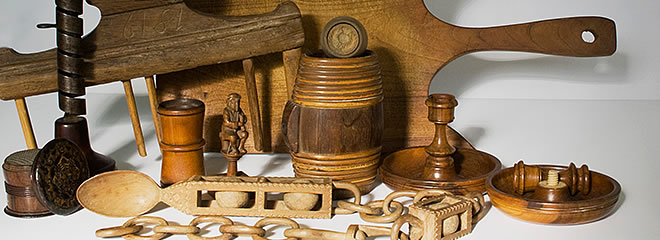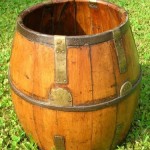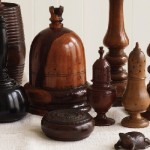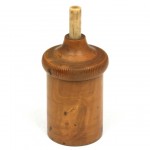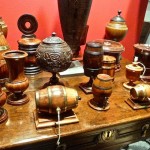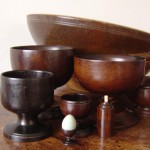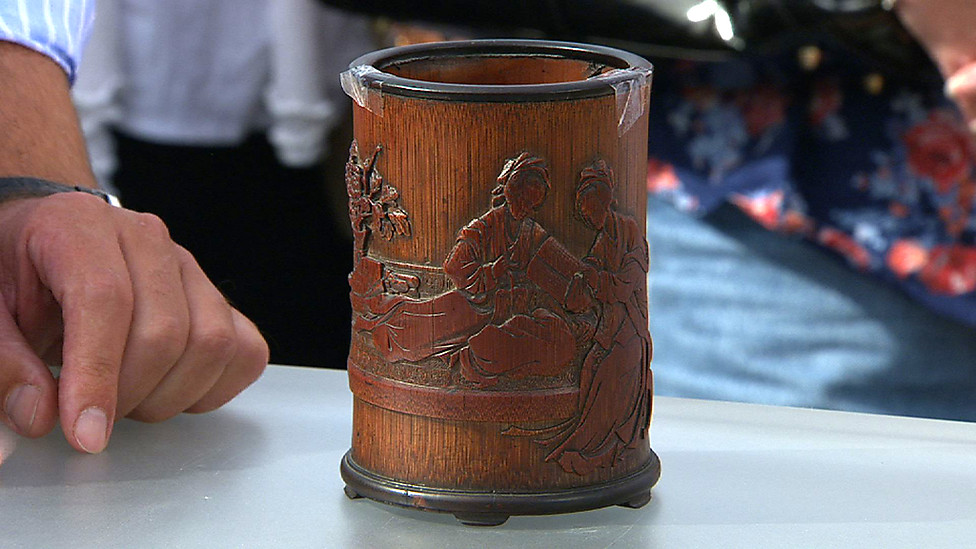Treen is a generic name for small handmade functional household objects made of wood. This makes it distinct from furniture such as chairs, and cabinetry, such as clocks and cupboards. Domestic and agricultural wooden tools are usually classed with treen.
Anything from wooden plates and bowls, snuff boxes and needle cases, spoons and staybusks to shoehorns and chopping boards can be classed as treen.
Prior to the advent of cheap metal wares in industrialized societies and later plastic, wood played a much greater part as the raw material for common objects. Turning and carving were the key manufacturing techniques.
The selection of wood species was important and close-grained native hardwoods such as box, beech and sycamore were particularly favoured. There was occasional use of exotic woods such as lignum vitae for mallet heads.
Wooden objects have survived relatively less well than those of metal or stone and their study by archaeologists and historians has been somewhat neglected until recently. Their strongly functional and undecorated forms have however been highly regarded by designers and collectors.
The scholarly study of treen was greatly advanced by Edward Pinto (1901–1972), who started collecting in his childhood and wrote a definitive book on the subject.
In 1965, when Birmingham Museum & Art Gallery purchased his collection, it contained over 7,000 items.
The History of Treen Antiques
What was Treen made from?
Treen is a very old word (the meaning is “of a tree”.)
Wood was for centuries the main material from which domestic objects where made, people used wooden plate’s to eat from and wooden goblets to drink from. This was not because it looked good but because it was a cheaper more abundant resource than glass or metals. Beech, ash and elm where frequently used, with woods like Olive yew and sycamore being used for pieces which where to be carved. Lignum vitae was used frequently due to its size (you could make large bowls in a single piece rather than having to make in pieces) these where termed as “wassail” bowl’s and are now highly collectable and rare.
How where Treen Antiques decorated?
Treen Antiques where decorated in a variety of ways including pokerwork, painting marquetry and carving. The most beautiful of pieces that have aged seem to be the plain ones although not as valuable as the carved pieces
How are Treen antiques valued?
The main factors in determining the value of Treen antiques are age, and the craftsmanship of the piece. 18th century Treen antiques are highly prized as are Hardwoods such as Lignum vitae. Highly decorated pieces also sell at a premium.Surprisingly the actual condition of a Treen Antique does not make a big difference except in prized pieces.
Buying Treen Antiques
As with buying any woodenware Treen Antiques should be checked for woodworm, old woodworm holes are okay but pieces with new worm holes should never be purchased
If the item is made up of more than one part make sure you are purchasing the complete items as part items rarely have value.
Make sure any metal working on the Treen Antique is original and has not been replaced with modern.
Dents and cracks are okay as these can show the ageing and use of the Treen Antique, only if the item is actually broken should it deter you from buying if the price is right.
Fake Treen antiques
With the increase of popularity of Treen antiques so has an increase of Treen Antique Fakes. Mainly restricted to expensive items as the cost of ageing staining and distressing an item makes it uneconomical for the cheaper pieces. As with any collectable’s Treen antiques should be checked as much as possible

